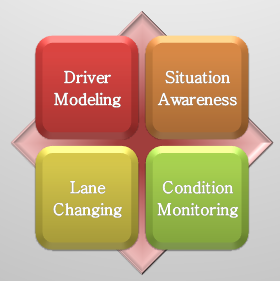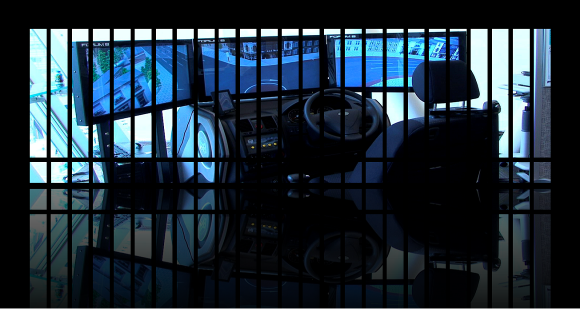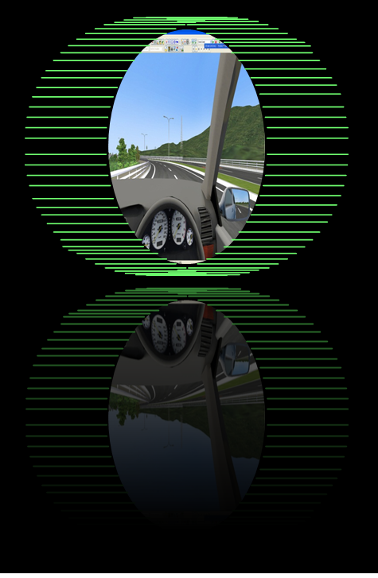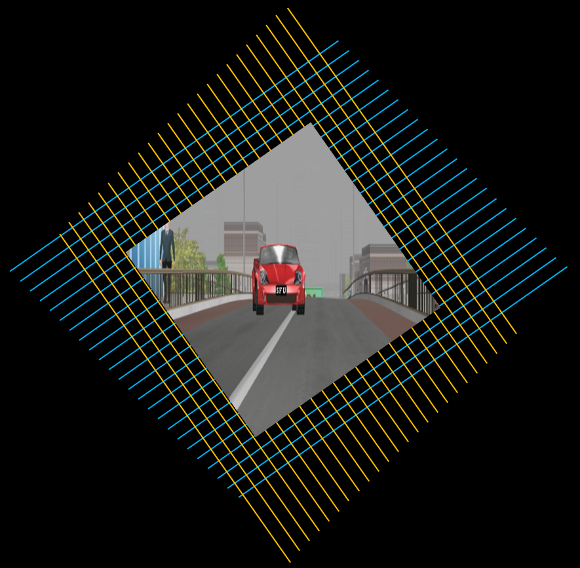

|
We study selected topics within the context of driverless cars and driver assistance systems. |

|
Driver assistance systems are expected to reduce the possibility of accidents caused by human error of judgement due to factors such as fatigue, impaired, or reckless driving.
We have developed an overriding controller within the framework of an advanced driver assistance system. The proposed design is a cascade control architecture whereby the driver control action is filtered or corrected by an internal controller. The purpose of the internal controller is to monitor driving conditions, identify abnormal situation (drowsiness, fatigue, drunkenness, etc.), and override the control of the car if required.
|
|
It is simplistic to regard driving as mere integration of longitudinal and lateral controller. We study and develop machine situation assessment in the context of autonomous driving. In particular, we are interested in deriving algorithms for standard driving functions such as 4-way stop, lane changing, understanding and following traffic rules, etc. We are studying the response of various drivers (via the drive simulator) in situations in highways, streets, and residential areas. We will study how the different situations that cause driver error or misjudgment. An associative memory table look up system is developed and being tested. The knowledge table includes all the traffic rules and procedures for approaching to traffic lights or initiating a lane change maneuver. We will employ a hierarchical three levels of perception, comprehension, and projection. It is important to note that a system of priority allocation is crucial in situation assessment. Safety, comfort, and energy efficiency are the main criteria and each is given a priority index within the event. The situation assessment module goes through a process of information relevance, sensor monitoring system and decision making algorithms to decide which situation is appropriate and what actions need to be carried out. These findings will be integrated with the driver models and advanced assisted driving system. |
|
Deriving a mathematical model for humans engaged in a cognitive process such as driving a car has been studied for the past five decades.
The behavior of people under the effect of alcohol, however, is well understood but a mathematical model to adequately predict the steering behavior of intoxicated drivers is less studied. With the advent of drive simulator and alcohol goggles, the input-output data of an intoxicated driver (simulation) is possible.
Using system identification techniques, four different linear models for these drivers are developed. The parameters and characteristics of these models are compared to the ones of equivalent models for sober drivers. Larger delay, less ability of maintaining the car in the center of lane, and more aggressive driving style are some of the important features of intoxicated drivers identified here. The proposed models are validated using the data collected from 50 minute driving sessions for both sober and drunk drivers. The parametric uncertainties of the model parameters are also being studied. |



|
The experiments are conducted on our driving simulator enhanced by an eye tracking system. We employ alcohol goggles to roughly simulate the effect of intoxicated driving. |
